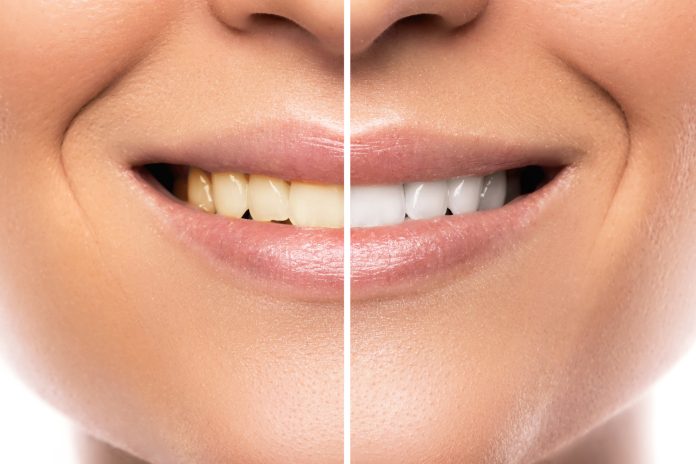We all want to appear our most delicate, and an approach to that is by learning how to naturally whiten teeth so we can flaunt a brilliant white smile. Although teeth whitening is technically a cosmetic practice, it requires more serious consideration. Whitening your teeth may significantly improve your quality of life by making you more content with your smile and boosting your confidence. Saying that mastering natural teeth whitening at home will help you get brighter, whiter teeth and minimize stains. Click resources online to explore further techniques backed by scientific research where you see related information about 6 Simple ways to naturally Whiten Your Teeth At Home.
Home remedies how to whiten teeth?
- What Causes Tooth Discoloration?
Your teeth might discolor for a variety of causes. Some factors are beyond our control, like aging or early injuries that might disrupt the formation of our teeth’ enamel. Hence, it is critical to consult with your dentist about your teeth whitening intentions. Even though whitening is often done for aesthetic purposes, your dentist can advise you on the appropriate treatment choices for the sort of discoloration you may have. Where you can also read about how to remove black stains from teeth naturally?
Some food products, such as tea, coffee, and colas, can discolor your enamel, which is the outermost visible covering of your teeth. Individuals who smoke or chew tobacco may have the same effects. Plaque deposition on your teeth can sometimes make them seem yellow as well. The outermost enamel coating on your teeth wears away with age, revealing the yellow dentin. Adult teeth can also become discolored due to trauma when the blood supply to the tooth is reduced due to some sports accident or similar injuries. Mouthwashes and rinses featuring cetylpyridinium chloride and chlorhexidine can also discolor teeth.
- 6 Natural Teeth Whitening Methods
Utilizing natural tooth whitening products and methods might be a good option. Here are six natural techniques to whiten your teeth without using any hazardous chemicals:
- Maintaining Healthy Oral Hygiene
While some tooth discoloration occurs naturally with age, it is primarily caused by plaque accumulation. The most essential thing a person can do to decrease tooth discoloration is practice good dental care. Toothpaste gently removes stains from the surface of your teeth, whereas flossing removes food and germs that might develop into plaque. Brushing shortly after eating or drinking acidic foods or drinks, on the other hand, may promote erosion. Regular dental cleaning is a tried-and-true strategy for keeping your smile as white as possible.
- Oil Pulling Practise
Oil pulling is an ancient Indian conventional treatment used to promote dental hygiene and eliminate toxins from the human body. The technique requires swishing oil inside your mouth to eliminate germs that can form plaque and lead to tooth yellowing. Coconut oil is a preferred option since it tastes good and has several health advantages. Additionally, coconut oil is rich in lauric acid, which has been shown to relieve inflammation and destroy oral bacteria. Several studies have found that oil pulling regularly lowers germs in the mouth, gingivitis, and plaque buildup. As a result, oil pulling is a risk-free exercise worth considering.
- Use Of Baking Soda While Brushing
It helps your dough rise, but it is also a moderate abrasive that can clear up stains. The grains help to eliminate the film of plaque on your teeth caused by germs while you brush. This, in turn, can assist in minimizing discoloration and tooth damage. You could make your baking soda mixture, but shifting to a toothpaste containing sodium bicarbonate would likely yield superior results. Brushing using baking soda-containing products has been shown in studies to act on surface stains over time. Furthermore, baking soda may aid in the remineralization of dental enamel and the elimination of undesirable odors.
- Utilizing Hydrogen Peroxide
The chemical compound hydrogen peroxide has antimicrobial, antiseptic, and antifungal impacts. Hydrogen peroxide, an oxidizing substance that reduces tooth discoloration, is utilized by dental experts all over the globe to give professional whitening. The whitening gel emits a gas that bleaches the teeth, making them whiter. It does, however, have adverse effects, such as elevated tooth sensitivity, and it must be administered correctly to avoid damaging the teeth’s enamel and gums.
- Eat fruits and vegetables.
A diet rich in fruits and veggies could benefit your teeth and your body. Raw, crunchy vegetables and fruits can help remove plaque as you chew. Apples contain malic acid, which increases saliva production and helps wash out acids. Kinds of toothpaste containing bromelain, a chemical found in pineapple, can help whiten teeth. Papain, an enzyme found in papayas, may also aid in tooth whitening.
- Avoid Staining Drinks And Smoke
Certain beverages will undoubtedly discolor your teeth, even if you have had your teeth whitened. Tannins, a micronutrient found naturally in plants, are in tea, coffee, and cola. These tannins stain your teeth because they induce color compounds to adhere to them. Again, if you smoke and have discolored teeth, your behavior is more than likely exacerbating the problem. Cigarettes include tar and nicotine, which seep into the gaps between your teeth throughout inhalation and create a brown or yellow discoloration.
Hope you haven enjoyed our article about home remedies how to whiten teeth? which can also answer your more questions like
-
how to remove brown stains from teeth naturally?
-
how to make your teeth white from yellow?
-
how make your teeth white at home?
-
how to make teeth stronger and whiter?
But answers will be the same as per mentioned research given above, keep reading. If anything where we can help just write us in comment box.









